The Blindians: Black and Indian Couples Reflect on Kamala Harris and Anti-Blackness Among South Asian Americans
- In a discussion spanning parental resistance, raising children while securing the duality of their cultural inheritances, Blindians are hopeful Harris will elevate a community that struggled for acceptance.

Kamala Devi Harris’ historical inauguration on Jan. 20 is being widely celebrated in the African American and South Asian American communities as a nod to her biracial identity. Harris, 56, makes history as America’s first female, first Black American and first South Asian American vice president. Her mother, Shyamala Gopalan Harris was a Tamilian from India, while her father, Donald Harris is a Black man from Jamaica.
But apart from these two communities, there is another group of people — South Asian and Black American couples — who are hoping to seek representation through Harris’ biracial roots. Identified as Blindians for their interracial relationship, they hope Harris will elevate a community that has struggled for acceptance in a country where few people share their background.
American Kahani spoke with a few Blindians who discussed the significance of Harris’ elevation to the vice presidency and shared their stories, detailing the challenges they faced to gain acceptance from the South Asian American community, the resistance, the hesitance and the anti-Blackness that exists and how they overcome it.
Representation and Validation
“We are beyond thrilled with Kamala Harris and that our little community of Blindians is starting to get exposure,” says Dr. Anjali Ferguson, a psychologist from Virginia. “Although our stories are tough, they are also full of love,” she says, adding that it is “exciting that finally people are hearing our voices and our stories. And Kamala is giving us that platform to do that.”
Anjali, 32, is married to Justin Ferguson, 32, and the couple has a 1-year-old son, Jay. She says Harris’ inauguration takes her back to when President Obama was inaugurated. “That was a really emotional moment, I remember for my husband and I,” she says. “And now it’s even more so because it feels so proximal to our experiences. Representation is important and we are hopeful that she will use that platform to elevate some of the issues that need to get more momentum.”
Like Anjali, Shay Banerjee, 41, of San Diego, California, hails Harris’ historic appointment as well. “We really love Kamala Harris,” he says. “She’s a California girl, she’s one of us.” Citing her biracial heritage, Banerjee says Harris as a “unique mix.” He credits her for putting Blindians on the map “You cannot ignore us,” he notes.
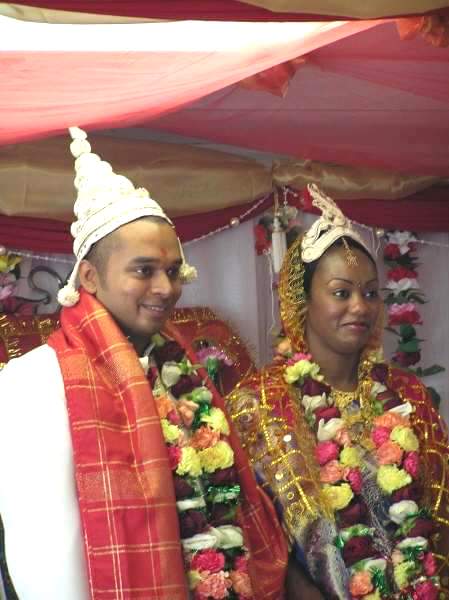
Anjali also is a contributor to the Blindian Project, a platform created by Jonah Batambuze, a Ugandan-American IT consultant, as a way of encouraging Black-Indian couples to express their love in photos and videos online, with the goal of reducing the racist stigma surrounding Blindian couples, normalize these relationships and dismantle anti-Blackness within South Asian American communities. The portal, which is active across social media platforms such as Twitter, Facebook, Tumblr, and Instagram, has a number of Blindians who share their stories and seek support and friendship for the community.
“The Blindian Project is a crowdsourcing project where we are trying to bridge the relationships between South Asian and Black communities,” explains Andrae Goldson, 39, a Brooklyn, New York-based accountant and contributor to the Blindian Project. He says the platform was created to have discussions about anti-Blackness, casteism, and build a community to provide support and representation.
“The base issue we had when a lot of us joined the Blindian Project was that we didn’t really see couples like us, we didn’t see people who have gone through the same obstacles, the same experiences like.” He says the platform enables people “to connect with those who can empathize and sympathize with as well as meet like-minded people.”
Disownment, Disapproval and Shame
Anjali and Justin have been together for 14 years. Despite telling her parents about Justin, now her husband, six months after they began dating, it took her parents six years to finally accept him. “I am a very open and communicative person, so it felt weird for me to hide such a big part of my life with them,” she says.
“And as expected, it did not go well — one, because I was dating, and two, he was a black man, so that was pretty upsetting for them and concerning for them.” So her parents chose not to talk about Justin or meet him for six years. They knew the two were still together, that they were dating, “but it just wasn’t a conversation we had and he was never really welcomed over or considered a part of the picture.”
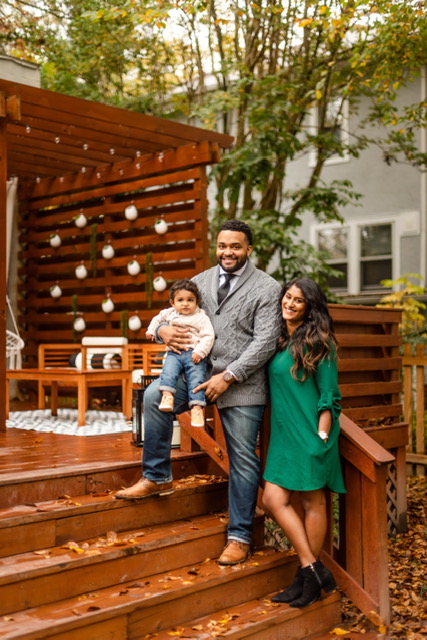
But when Anjali’s parents finally met Justin, “they actually hit it off, and to a certain extent it felt like we were trying to figure out how to mesh up both our families.”
Shay, 41, faced a lot of resistance from his parents as well. “It was the toughest challenge to convince my conservative Bengali parents,” he says. “They come from a different generation.” Although his parents had prejudices over darker skin color, their concerns with their son’s relationship was more about losing their place in society. “What will the aunties think,” his mother wondered. “It became a question of who is going to give up first between mom and me,” he recalls, adding that his father “slowly came around.”
His wife Theresa Banerjeee chimes in. “Primarily for them they felt like their reputation was at stake, they were ashamed.” Not only was Theresa a Black woman, but she was also older than their son. “That was a complete no-no,” the 45-year-old said, referring to the age difference. But once they got to know her, it was a “complete turnaround,” she says. The couple initially faced resistance from Banerjee’s older sister, a physician in Kansas City. “You don’t just marry the husband you marry the family,” Theresa quotes her sister-in-law as warning her then.
Parental Concerns
Mili Mavely Washington, 45, of Charlotte, North Carolina had a different experience. When her husband, Tyris Washington asked her father for her hand in marriage, she recalls her dad was surprised, as he “didn’t see it coming” and took “time to digest.” However, Mili says her father’s concerns were less out of concerns of race and more out of her well-being. “I was a giddy 20-year-old,” she says, adding that in some ways marrying Tyris “was a leap of faith.” She says her musician husband’s foundation’s were solid, and he felt “like a steady boat.” Mili says Tyris is “a couple of years,” older than her, but did not disclose his age.
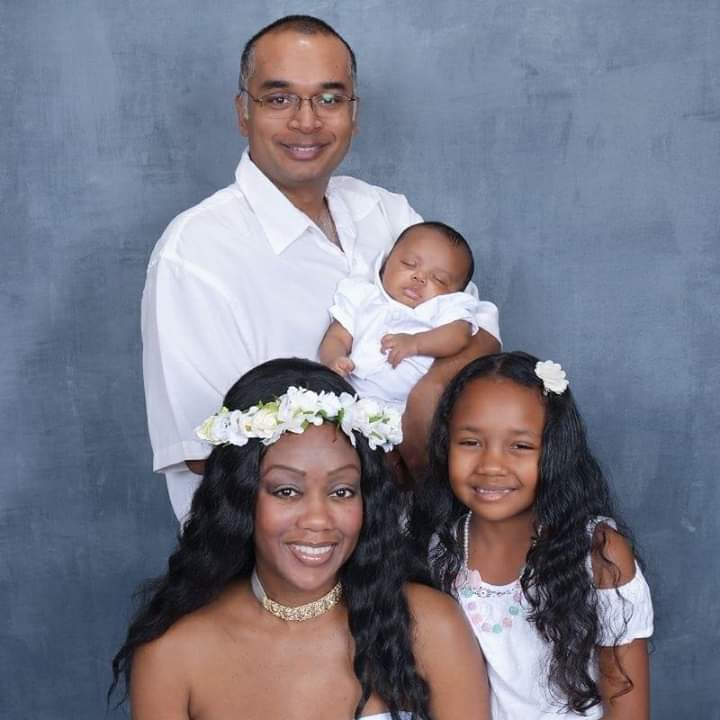
Mili met Tyris in New Delhi, where she was born and raised. They met at a club where Tyris’ band was performing. She offered to be his tour guide to show him around Delhi, and “one thing led to another.” Tyris lived in Chicago, and Mili too was U.S. bound for a Masters at George Washington University in Washington, D.C.
That definitely worked in their favor, as did their religion. “One thing that unifies us is that I am not Hindu, I am Christian,” she says. The couple and their three children celebrate Diwali “in a small way,” but they celebrate Rakhsbandhan “in a big way,” something Mili celebrated with her brother growing up in Delhi.
Andrae’s partner Nupur Chaudhury, 37, deconstructs this parental concern. Stating that questions about her and Andrae’s relationship came from the older generation and parental figures, she said they worried about how things would be when they had children or they worried about the state of America and how that would affect their relationship. Andrae and Nupur have been together for five years, since they first met after being set up by common friends. They are engaged, but not married.
Nupur says that although the elders in her family are “genuinely concerned” for her future, there’s also “the piece that this generation is part of a culture that was very much rooted in anti-Blackness.” She says while it’s important to understand “the complicated nature of how immigrant elders want to make sure that the younger generation is okay,” it is equally important to acknowledge that this concern is flawed. It is rooted in anti-Blackness, classism, the unknown of the unfamiliar.” She has learned to “unpack” these concerns” and has learnt to play a dance and be aware of race and racism in this and other countries which always play a part” and manifest.
Keeping it Real
How does race play when kids come into the equation? Does one race take precedence over the other.
Anjali doesn’t believe it does. She admits that she herself has made efforts to understand Black history and culture so she can raise “a child that he understands he is a proud Black man.” Since the birth of their son, Anjali says she and Justin have both been learning from each other’s culture to bring up Jay, but they “definitely keep it real.” However, she adds: “But we have learned, especially within the last five years, why we need to highlight Black experiences and teach about them to our children who have Black identity and it is so important,” she says. “The BLM movement over the summer has really elevated that conversation; its a safety concern and a huge systemic issue. So if you are not prepared for those prejudices and the discrimination you are eventually going to face, then the child at a significant risk.”
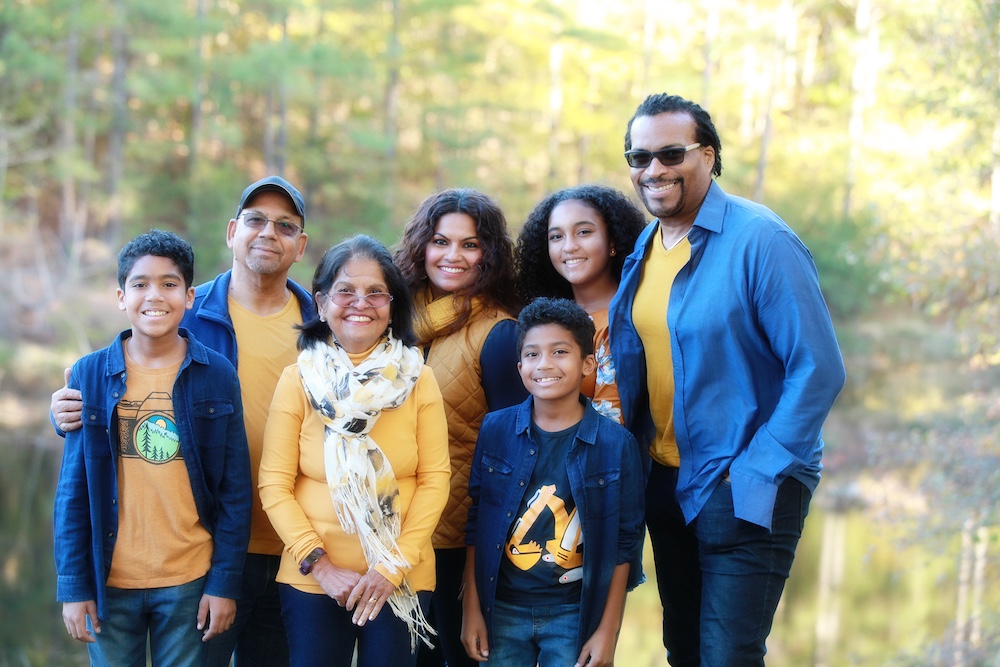
Similarly, writer Kavitha Rajagopalan of Brooklyn, New York is raising her two children — 9 and 4 — as Black. She says it’s a challenge, because as a non-Black woman, she has her own limits to raising Black children. “I strive to raise my daughter with true love and celebration for her own blackness,” she says. “This country has spent so much time suppressing and erasing Black joy, [and that’s why] I want my daughter to feel solidarity with Black people.” Her son “inherently” connects with Black people, she adds.
She mentions Shyamala Gopalan, Harris’ mother — who “celebrated her” daughters’ blackness “without cutting off her line of heritage.”
Nupur and Andrae have discussions about starting a family. Speaking of Harris’ upbringing, Nupur lauds her mother, “who was cognizant of the fact that she was raising Black kids and would take them to church. She knew what the perception was,” she says. “It doesn’t matter what our kids look like, the perception will always be that they are Black,” she notes. “I really admire Kamala Harris’ mom for acting on that head-on.” Referring to Harris’ acceptance speech, where she “talked eloquently” about being a Black American and also coming from Indian heritage, Nupur hopes that “our future children can articulate the same beautifully.”
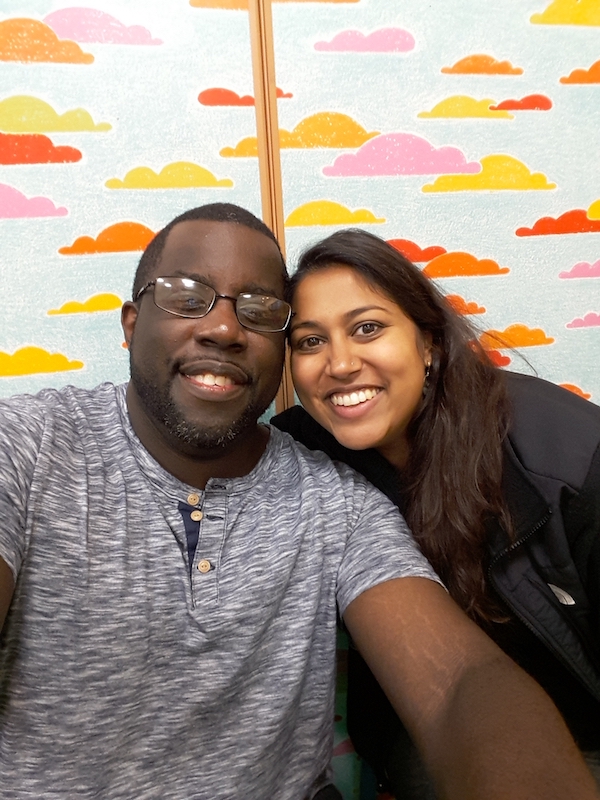
In an article titled “Love and Anti-Blackness: An Indian American Mother Reflects On Raising Black Children in America” in American Kahani, Kavitha writes about her kids. “What I see in my children — my daughter, especially (because of his serious health issues, my son does not attend a school or interact with others, and so is free from the web of hate and pain that makes up our own society) — is that Black people must connect to their Blackness through their shared pain,” she writes. “On the other hand, I connected to my Indian-ness through my parents’ sense of history, of their sense of greatness – the mythology, perhaps the delusion, of an ancient and glorious past. As I grow older, I realize that this mythology, which was a shield protecting me from my loneliness in a childhood where I didn’t fit in, was also a wall between me and my own inheritance of pain.”
As a psychologist, Anjali specializes in working with children and families. “In the last year — especially after the Michael Brown shooting — I specialize in racial trauma and how certain communities of color experience greater impacts of trauma with things like racism and how it’s deeply rooted in all our systems,” she explains. “It has to stay when children are young,” she says, and add that at six months children begin to notice race differences and racial biases get solidified in children by the ages of 2-4.
Best of Both Worlds
What is common to most Blindian families is their acceptance of both cultures, and their ability to blend the two, whether its festivals, holidays or food. But how does one manage a balance between the two cultures and traditions? How do these parents go the extra mile to make sure their kids get the best of both the worlds.
For the Banerjees it’s family gatherings, language, festivals and religious ceremonies like pujas. It helps that their kids — Samaya, 8 and Sai, 1 – have their maternal grandmother and paternal grandparents close by.
The Banerjees are raising their kids as both Hindu and Christian. Theresa, who describes herself a “proud American” confesses that she has adapted to the Indian culture more. “I am very accommodating to my in-laws,” she says and adds that she makes a point to wear a sari when there is a Indian festival or a pooja. “It’s definitely easier to adapt that way.”
At the Washington home, Mili spends time with her kids – Kaavya, 14, Kabir, 12, and Kahlil, 10 — almost daily, teaching them Hindi. “Tyris embraces India, it’s culture and food,” she says of her husband. “There is a lot of India in the kids as well,” she says.

Mili’s parents, Annie and Matthew Mavely, stay with them and even though she’s not a “typical Indian,” Mili says “everything she represents is still Indian.” However, it is easy for her to blend both cultures because her husband is “more accepting,” unlike her who is “more critical.”
What also helps, Mili says is that she and her husband are “essentially like-minded with a strong sense of faith.” She says her husband really “pushes her” and it is with a “sense of gratitude that they all embrace each other.” And it is this ethos that the couple passes on to their kids. Of course race, xenophobia and bigotry are all discussed at home, but “the background of the conversation is that people are good. We don’t inject negativity.”
Acceptance and a Sense of Belonging
While Anjali’s family took six years to accept Justin, his family, on the other hand, was very welcoming. “And all our nieces and nephews have only known me as an aunty and now after a decade and a half, it just feels like home,” she says.
“But with my parents and even with my extended family — there was always continued underlying and at times subtle racism, sometimes pretty blatant And it always felt like no matter what my husband did, or how much he kind of bent over backwards, he wasn’t fully accepted into the home.” She said the couple saw those differences when her brother would date women who were either white or Indian and “they would get much more acceptance than my husband would get even though he had been in the picture much longer than my brother’s significant others.”
In San Diego, Shay says that the Indian community has accepted his wife and like her more than him. “She’s great with people,” he says.
Anjali, Shay, Andrae and Nupur credit the Blindian Project to help foster a sense of community.
Until they were introduced to the Blindian Project, Shay and Theresa knew two other Blindian couples from the area. Now they have been introduced to a “a planet” of people like them. “I have always felt secure and validated,” Shay says, but adds that it was good to know couples like them.
On the other hand, it was a long 11 years later that Anjali and Justin met another couple like them. Anjali notes that interracial relationships can feel very isolating, stressing that the Blindian Project “altered her life.” Seeing peoples’ struggles and celebrations highlighted gives her hope and empowerment, she adds.
In many ways, Nupur says her and Andrae’s story is a classic story of a girl and boy meeting and falling in love. “It’s about finding a person and connecting with that person,” she says. “It’s more of societal pressure and norms which complicate so many other things.”
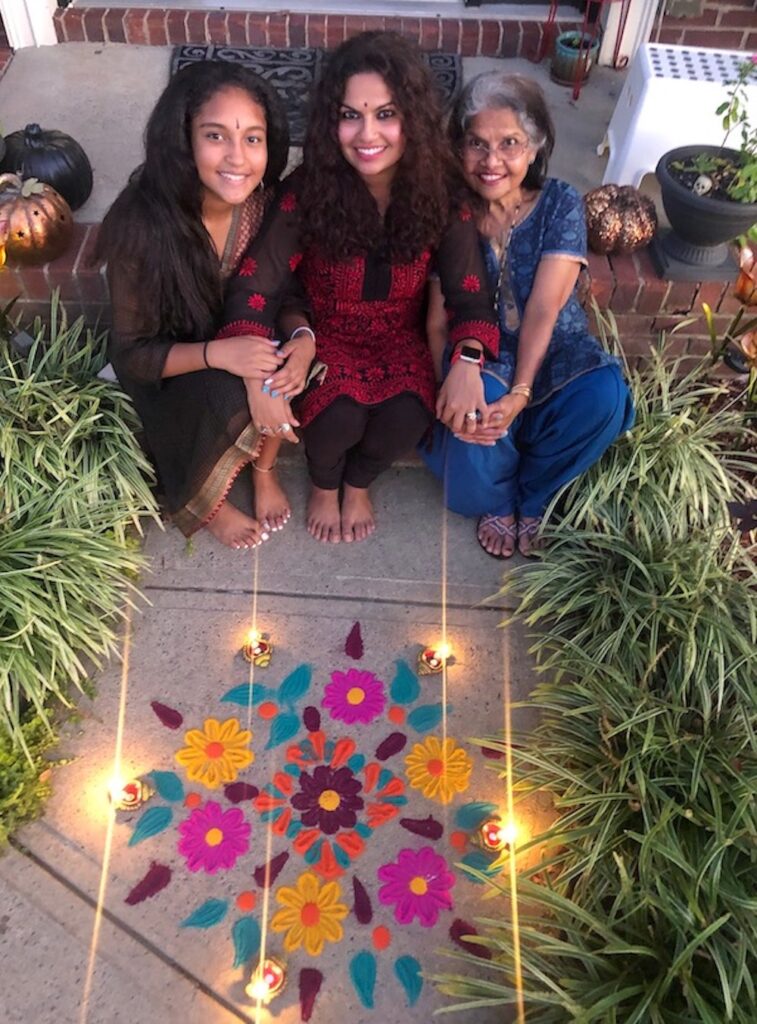
She hasn’t felt any “friction” in the African American community, especially with the Jamaican community, where she saw a “lot of embracing and support.” The only question she was asked was about her religion — whether she attended church. “But it is not necessarily a deal-breaker,” she says. “It never felt like that in he Jamaican community or Andreas’ family or his extended family.” However, when it comes to the South Asian American families, she says questions about religion, employment, family origin, and parents’ occupations, come into play. “These are the ‘typical’ conversations between parents and kids in our community, and it gets complicated with race.”
For Kavitha, growing up in North Carolina exposed her to a different Black world than the one in New York. “I didn’t learn to love Black people because I loved my husband; in many ways, I am able to love my husband because I know and love Black people,” she writes. “Long before we met, I came to Black spaces not through books and Google searches but through friendship, through meals and music and dancing and joints and road trips and concerts and art openings, through my women friends and the stories we told each other about our mothers and our aunts and ourselves, and about surviving and caring and cooking.”
In the article, “Love and Anti-Blackness,” Kavitha notes that her “education in anti-Blackness was in these relationships, in the anecdotes I overheard, in the arguments I witnessed, in the grief I supported, in the jokes I learned to understand,” she says “it wasn’t abstract and removed, it was the reality of the people I loved. And in these spaces, I could freely give and receive love, and there was never any question that I was accepted — and Indian and seen. What I have learned in these intimate relationships is that love is seeing and grieving the other person’s pain. Which also requires acknowledging and sharing your own.”
Andrae reflects on sharing as well. Being a Jamaican American with an Indian American partite, he said the two of them share a similar experience of being immigrant kids with a natural need to preserve culture. also trying to navigate in this country and assimilate those are the things that we also share the colonialist mindset that we have to adapt and navigate through shared experience between both cultures.
Bhargavi Kulkarni has been a journalist for nearly two decades. She has a degree in English literature and French. She is also an adventure sport enthusiast, and in her free time, she likes to cook, bake, bike and hike.



Beautifully written on a much needed and timely topic. I had not heard of the term Blindians before. Thank you.